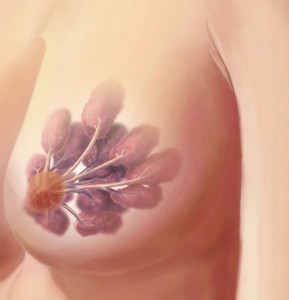
The unique imaging method, first introduced at ECR 2011, uses transmission ultrasound to perform a 3D scan of a pendulant breast in a water bath, and reconstructs multiple images for each coronal slice.
The technology offers several key advantages over mammography in terms of reduced radiation exposure and discomfort, said coauthor Vasilis Marmarelis, PhD, who is professor of biomedical engineering at the University of Southern California, Los Angeles.
The ongoing clinical trials involve about twice as many patients as reported in 2011, compare MUT imaging in 103 women with Breast Imaging Reporting and Data System (BI-RADS) category 4 lesions, and involve histopathology from minimally invasive core biopsy of the suspicious lesions.
The lesions ranged in size from 2.0 to 28.0 mm, with an average size of 7.1 mm. The results indicated that MUT was able to detect and accurately classify 33 of 34 malignant lesions in the biopsy samples, for a sensitivity of 97.1%. Fifteen of the 33 (45%) detected malignant lesions had maximum dimensions of 5 mm or less, and were primarily ductal carcinoma in situ (DCIS). The smallest detected malignant lesions (all DCIS) were 2 mm in size.
The technology, which takes about 12 minutes per breast, uniquely combines ultrasound and tomography readings to better detect lesions. The key capability of the MUT technology that sets it apart from existing modalities is its demonstrated ability to differentiate lesions from normal breast tissue, as well as malignant from benign lesions, using proper combinations of multiple acoustic attributes at the tissue-voxel level.
These attributes are measured by MUT with ultrasound transmission tomography — an approach fundamentally different from the current echo-mode clinical ultrasound — and they represent novel and rigorous calibrated measures of the bulk acoustic properties of cellular microstructure."
Since the cellular microstructure of malignant and benign lesions, as well as normal breast tissue, is distinctly different, these measured attributes, properly combined, can differentiate the lesions through computational classification clustering.
Dr. Marmarelis noted that one practical limitation of the MUT technology is the inability to scan breast tissue near the chest wall (pectoral muscle) and in the axillary region of the breast extension near the armpit because of the way the breast is positioned for scanning in the water bath. He added that he is confident the problem can be overcome in the future with design changes, but Dr. Destounis said the issue is common with ultrasound.
MUT results are not allowed to alter the established biopsy procedure yet. However, as soon as MUT becomes accepted as a reliable screening, detection, and localization technology, it will also become extremely useful in assisting biopsies because of its 3D fixed-coordinate system.